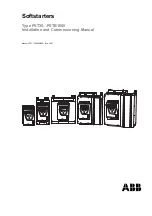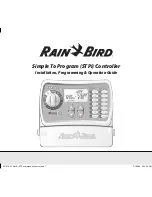
TLR-100/300 SERIES PNEUMATIC REMOTE CONTROLS
Page 5
© 2009 CLEMCO INDUSTRIES CORP.
•
www.clemcoindustries.com
•
Manual No. 22428
operation to prevent dust from entering the compressor
intake.
3.1.3
Make sure that the safety petcock located on the
Inlet Valve is open. The petcock is open when the
petcock lever is in-line with the petcock, as shown if
Figure 3.
Figure
3
WARNING
To prevent severe injury from accidental
activation of the blast machine, open the safety
petcock when the blast machine is not in use.
Opening the petcock prevents unintentional
blasting. The control handle can not activate
the machine when the petcock is open.
3.1.4
Make sure that the remote control handle lever
is in the up (no blast) position, and that the handle lever
and safety lock move freely.
WARNING
A separate manual is supplied with the remote
control handle. Do not operate the machine
before first reading the remote control handle
operating instructions.
3.1.5
Check to make sure that the handle lever will
not seal the opening on control handle, unless the safety
lever lock is pulled down.
WARNING
Malfunctioning control handles could cause
unintentional actuation of a blast machine, or
prevent a machine from deactivating upon
release. Malfunctioning control handles must
be taken out of service immediately and
repaired or replaced. Serious injury or death
can result from unintentional blasting.
3.1.6
Start the compressor, and bring it up to
operating temperature and pressure. The pressure must
be more than 50 pounds per square inch (psi) but must
not exceed the blast machine pressure rating.
3.1.7
Fill the machine with screened, clean, dry
abrasive that is manufactured specifically for blasting.
3.1.8
Open the compressor air supply valve, to
pressurize the air supply line. Listen for noise that
indicates any open lines or leaks.
3.1.9
Do not allow anyone within 10 feet of the blast
machine except machine tenders who are appropriately
fitted with proper protective equipment. The blast
operator could pressurize and depressurize the machine
without warning.
WARNING
All persons except for the machine tender must
stay clear of the blast machine. The blast
operator could pressurize or depressurize the
machine at any time. The noise generated by
the sudden release of compressed air when the
machine is pressurized or depressurized, may
startle bystanders, and could vent abrasive
under pressure. Either condition could result in
injury. The machine tender must wear a suitable
respirator, plus satisfactory eye, face, and
hearing protection.
3.1.10
When the blast operator is ready, either the
operator or the machine tender stands away from the
concave filling head of the blast machine, and the
exhaust muffler and then close the safety petcock.
Closing the petcock prepares the machine for remote
operation, and activation by the control handle. Air
should be heard escaping from the orifice under the
control handle lever but nowhere else. The noise from
air escaping at the control handle is an audible signal,
warning that air is supplied to the blast machine, and will
activate if the control handle is pressed.
Open
Closed





































